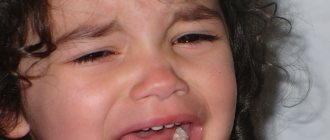Bradylalia
Bradylalia is a slow rate of spoken and written speech, often accompanied by disturbances in gross motor skills and mental processes. Bradylalia can be caused by hereditary predisposition, birth trauma, intoxication, neurological diseases and mental disorders.
Signs
- unnaturally slow rate of speech - both out loud and silently
- increasing pauses between words and sounds within words, stretching vowels
- monotonous, expressionless voice, nasal tone of voice
- disorders of gross and fine motor skills and facial expressions
- lethargy, clumsiness, difficulty coordinating and concentrating
How to fix?
You need to start with diagnostics - both medical (neurologist) and psychological and pedagogical (speech therapist, psychologist, psychiatrist).
The speech therapist assesses the condition of the articulatory apparatus and speech motor skills, sound pronunciation and written speech. Based on the results of the examination, he proposes a program of classes to develop correct speech reactions. Accompaniment with speech therapy massage is often necessary.
Speech therapy classes, as a rule, take place in parallel with medical therapy - exercise therapy, massage, physiotherapy and pharmacotherapy. As a rule, the results of targeted work appear after 6-12 months.
Causes of speech impairment in children:
The main factors leading to speech disorders in children are divided into external and internal, and sometimes they can be combined. So, what influences the development of speech disorders in children:
- Intrauterine pathologies, heredity
- Birth injuries, prematurity
- Diseases and injuries of the mother during pregnancy
- Maternal alcohol consumption, smoking, exposure to poor environmental conditions, taking medications
- Mother's stress
- Infectious diseases in the first years of life, injuries
- Hearing impairment
Often the cause of speech disorders in children is the environment and surroundings. For normal development, a child needs attention and communication with his parents. Unfortunately, even in prosperous families, children may not be engaged and communicate enough: the child plays with a tablet, phone, toys, but these things do not develop his speech in any way.
Sometimes parents do not try to provoke a conversation with the child - they guess his wishes, immediately fulfill requests, etc. Thus, the child simply does not feel the need to speak. In addition, the child needs constant new impressions; in monotonous living conditions, the child’s development slows down.
Tahilalia
Tahilalia is excessively fast, “sloppy” speech that is difficult for others to understand. It may be accompanied by motor restlessness, too rapid development of mental processes, and violations of phonetics, vocabulary and grammar.
As a rule, tachylalia is detected in children with hyperactivity, but it can also be caused by poor-quality speech education and diseases associated with the brain.
Signs
How to fix?
A neurologist and psychiatrist diagnose the state of the nervous system and intellect, after which they prescribe medication and physical therapy, exercise therapy and massage.
The speech therapist examines oral and written speech, fine and gross motor skills. The main goal of a speech therapist’s work is to develop the skill of calm, smooth and rhythmic speech. To do this, the specialist uses the conversation method, in which the student has to limit his speech flow; logorhythmics, loud reading, speech exercises to the beat, retellings and dialogues. Correction of tachylalia takes from 3 to 12 months of targeted and comprehensive work.
In our Center you can undergo professional diagnostics and receive qualified help from a speech therapist for disorders of the tempo and rhythm of speech. To get a consultation and make an appointment, request a call back using the form.
Types of speech disorders in children:
- Dysphonia (aphonia) is a change in the vocal apparatus due to tension and spasm in the ligaments. With this disease, the voice becomes hoarse, the pitch and timbre change.
- Bradylalia is correct, but very slow speech. There is the opposite of this speech disorder - tachylalia. In this case, speech is greatly accelerated, and individual syllables may be skipped or repeated.
- Stuttering is a disordered speech rhythm that occurs due to convulsions in the speech apparatus.
- Dyslalia is a speech disorder associated with difficulty pronouncing individual phonemes, for example, a lisp and burr.
- Rhinolalia - nasality
- Dysarthria - occurs due to poor mobility of the speech organs, as a result articulation suffers. It also leads to impairments in writing, reading and speech in general.
- Alalia occurs due to underdevelopment of the speech centers of the brain. The disease can be congenital or acquired.
- Aphasia means the loss of already formed functions and is caused by damage to the speech areas of the frontal cortex. With this serious speech disorder, children experience a complete or partial loss of the ability to understand speech addressed to them and to speak themselves.
The most serious speech disorders include alalia, aphasia and their types.
What should parents do if their child has a speech disorder?
You should not try to correct this pathology through prohibitions and shouts like “Come on, stop making faces, speak correctly now.” Since these disorders are closely related to the state of the nervous system, you should try to create a calm atmosphere in the family, try to adjust communication with the child, and establish a trusting relationship.
Correction of speech disorders should be carried out by a qualified speech therapist. It is advisable to consult with a neurologist, psychotherapist, or psychologist who works with children with developmental disabilities before starting classes. You will have to be prepared for the fact that the cycle of correctional classes will be long - several months, perhaps several years.
If there are people in the family with speech impairments, you need to work on correcting it. It is advisable for the child to hear calm, quiet speech around him at a leisurely pace for imitation. It is necessary to celebrate any, even the smallest, successes of the child, convince him that the defect can be overcome, and encourage him.
To strengthen the child’s nervous system, it is advisable to carry out general strengthening measures:
- Hardening.
- Doing feasible sports.
- Taking vitamin complexes, a large amount of fresh vegetables and fruits in the diet.
- Maintaining a daily routine.
- Optimization of teaching load.
- As recommended by your doctor, take antipsychotics.
Compliance with such recommendations will lead to the correction of speech disorders.
How to work with children with speech rhythm and tempo disorders in a secondary school?
At the beginning of correctional work to eliminate speech defects, a speech therapist can establish a so-called “silence mode” for a month in order to break the stereotype of incorrect speech. It is necessary that the teacher supports this event, does not force the child to speak out, and if necessary, then controls that this happens through whispered speech.
It is desirable that speech without hesitation or pauses, practiced in classes with a speech therapist, be encouraged and supported by the teacher. There is no need to force the child to repeat an incorrectly pronounced word, discuss his defect with strangers, or demonstrate the characteristics of the pathology. If such a child is left-handed, you cannot re-teach him to write “like everyone else.” With this approach, speech pathologies will resume with renewed vigor.
It is advisable to protect children with speech impairments from participating in noisy and stressful events, long excursions and travel during their correction. The teacher’s speech should be a role model - clear, smooth, calm, expressive, and impeccable in articulation.
Report “Impairment of the tempo-rhythmic aspect of speech of preschool children”
Report
on the topic: “Violations of the tempo-rhythmic aspect of the speech of preschool children.”
Plan:
1. Introduction. Relevance of the problem.
2. Types of violations of the tempo-rhythmic aspect of speech in children.
3. Tachylalia (causes, symptoms, type)
4. Bradylalia (causes, symptoms)
5. Diagnostics
6. Forms and methods of corrective action in eliminating tempo-rhythmic disturbances in children.
7. Conclusion
8. Literature
Introduction. Relevance of the problem.
Human speech is a complex process of higher nervous activity. Normal rhythm is a consequence of the correct relationship between the basic processes in the cerebral cortex - excitation and inhibition. In speech, it is expressed in the relative preservation of unity and adherence to the correct verbal stress, which mainly organizes the rhythmic structure of speech. The rhythm of speech is extremely complex. Violation of it makes it difficult and distorts speech. A child who has a deviation in the tempo-rhythmic organization of speech can speed up or slow down the rate of speech within one phrase or word, skip syllables in a word, words in a phrase, replace stress.
Emphasizing the importance of words, we pronounce them slowly, and something secondary and insignificant - as if in a “patter.” However, there are speech pathologies in which the pronunciation of words is so accelerated or slow that the understanding of speech is lost - it is so illegible. These are signs of speech pathology - disturbances in the tempo and rhythm of speech. An adult and a child with such a pathology, seeing how others react to his speech, tries to speak out less so as not to get into an awkward position.
Violation of the tempo-rhythmic organization of speech is a complex psychophysiological disorder associated with distortion of speech fluency. The combination and alternation of stressed and unstressed syllables, as well as their relationship, is called the rhythm of speech.
Tempo
is the degree of speed of sound elements changing in the flow of speech. It is these elements that can be impaired with minimal dysarthric disorders and general underdevelopment of level III speech. Prosodic units influence the implementation of emotional and semantic components of speech.
The tempo-rhythmic organization of speech unites and coordinates all processes affecting oral speech, including lexical-grammatical structuring, articulatory-respiratory program and a complex of prosodic characteristics. Children may experience an acceleration in the rate of speech, accompanied by distortion of the sound-syllable structure, or a slowdown in the rate of speech with many unreasonable pauses and speech emboli. Based on the above, it can be noted that tempo and rhythm should be given quite a lot of attention.
Types of violations of the tempo-rhythmic aspect of speech in children.
Speech rate disorders include tachylalia and bradylalia.
. These defects can be expressed to varying degrees. Mild and moderate degrees are of little concern. In severe cases, the communication process is disrupted, and speech rate disorders are defined as pathological.
The development, manifestations and methods of correction of these defects are different. Research shows that tachylalia and bradyllia may only be an external manifestation of changes in brain processes. Therefore, to overcome them, a neurological examination and complex treatment are necessary: medication, psychotherapy, and speech therapy.
Tahilalia
(from the Greek word
tachus,
which means “fast”, and
lalia
- speech) - a form of oral speech disorder, expressed in a pathologically fast pace of speech, which is not accompanied by defects in phonetic, lexical and grammatical structure
. Tachylalia occurs when there is a pathological predominance of excitation processes over inhibition processes .
Speech is characterized by uncontrollable swiftness. When haste, speech attention disorders, hesitation, repetition, swallowing, rearrangement of syllables, words, unclear pronunciation of phrases, etc. may appear. However, when attention is drawn to the speech, the hesitation disappears.
According to the definition of M.L. Khvattsev, with tachylalia, 20-30 sounds are pronounced per second (the norm is 1-14 sounds). Such rapid-fire speech can be difficult to understand, even when the pronunciation does not change. But often, due to the speed of utterance, syllables are repeated or, conversely, they are skipped, sounds and sometimes words are distorted. But the speaker, as a rule, does not notice all this. He often does not listen to the end of the interlocutor and is in a hurry to speak out himself. A stormy stream of sounds and words is pronounced without respite, until it is completely released. Sometimes an excessively fast pace of speech is accompanied by rapid, sometimes erratic movements of the arms, legs or the whole body.
Depending on the situation of speech communication, the severity of symptoms of tachylalia changes. The greatest difficulties are experienced in vital situations, in communicating with authoritarian people, in unfamiliar surroundings, in moments of excitement and argument. The child is in such a hurry to say something that he does not always even have time to draw in air to breathe. Accordingly, both the timbre of speech and its expressiveness are impaired. Speech becomes monotonous, without color. The child begins to speak without listening to the interlocutor, without understanding the question. Tachylalia may be associated with language impairment in ADHD.
Symptoms of tachylalia
Manifests itself in both speech and non-speech symptoms.
1. Abnormally fast rate of speech, but phonetics and syntax are not sharply distorted.
2. Uncontrollable rapidity of speech.
3. Disorders of speech attention, repetitions, hesitations, rearrangements of syllables, unclear pronunciation of phrases.
4. Inner speech disorders.
5. Impaired written speech.
6. Violations of general motor skills (accelerated pace of all movements, hyperactivity, tics are common).
7. Neuroticism, motor restlessness even in sleep, short temper, slight excitability.
8. Unstable attention, very rapid switching from object to object. 9. All types of memory suffer. Speech can't keep up with racing thoughts
Tachylalia is very often combined with other speech problems, such as:
Poltern (
stumbling) - when, in the presence of tachylalia, an intermittency of a non-convulsive nature is observed. Combined with a violation of general and speech motor skills. May occur against the background of other speech disorders. Against the background of accelerated speech, repetition of words, syllables and sounds occurs. It must be distinguished from stuttering, since stumbling does not have convulsions of the speech apparatus in its etiology; a child or adult with stumbling does not experience fear of speaking.
Battarism
- a type of tachylalia, when, due to a violation of speech attention and a severe violation of the tempo of speech, a phrase is formed incorrectly. It is also often associated with other speech disorders.
With battarism and polternism there are also speech,
and
non-speech symptoms:
1. Impaired oral speech (hasty, disturbances in the formation of individual sounds, rearrangements, omissions, changes in sounds and syllables, loss of words and phrases). Speech consists of short, unrelated sentences.
2. Stumbling in speech. The sound is not pronounced immediately. The lips and tongue may move silently, resembling convulsive movements.
3. Breathing and diction problems.
4. Voice disorders (no sonority, monotony, symptoms of voice overstrain)
5. Violations of writing (stopping the hand in the process, omissions, substitutions, rearrangements of syllables and letters, words and entire phrases).
6. General motor skills are impaired (swiftness, quick turns, scattered movements, grimaces).
7. Unstable attention (they don’t know how to listen to others, they don’t catch thoughts well and don’t remember them)
8. Scattered thinking, lack of logic.
9. Uncritical (they often do not notice their defect, adults rarely seek help themselves).
Physiological iterations –
the term comes from the Latin
iteratio
- repetition. In preschool children, as a result of imperfect activity of the auditory and speech-motor analyzers during the period of speech formation, the following feature is noted: children repeat some sounds or syllables. Moreover, they themselves do not notice such phenomena, and, therefore, such iterations do not interfere with normal verbal communication.
F. A. Pay explained the reason for these phenomena by the fact that preschoolers’ auditory and kinesthetic images of many words are not yet clear enough. And the vagueness of verbal images leads to their erroneous reproduction. This is why children's speech contains many repetitions, inaccuracies, and rearrangements.
Gradually, thanks to the child’s constant verbal communication with others, their educational influence as a result of systematic speech practice, by the age of 4–5, such transitional phenomena as iterations and other imperfections of phonetics completely disappear in children.
Thus, iterations in children's speech are a completely natural, natural phenomenon. They are called physiological because they have nothing in common with pathology, but are characteristic of the early period of speech development in preschool children.
Types of tachylalia:
· Clear - when, in addition to the accelerated rate of speech, the child has no other disorders.
· In combination with a violation of sound pronunciation.
· In combination with incorrect grammatical construction of phrases.
· Difficulties in selecting words, rearranging and repeating syllables.
· With impaired auditory attention.
Causes of tachylalia
Certain opinion about the reasons
Experts have not yet identified the occurrence of tachylalia. M.E. Khvattsev argued that the central link in the pathogenesis of tachylalia is a disorder in the tempo of external and internal speech due to the pathological predominance of excitation processes over inhibition processes. The hereditary nature of tachylalia has also been proven. An important role in the occurrence of this defect is played by imitation of the rapid speech of others, and incorrect methods of raising a child and his speech.
Thus, there are several factors that provoke changes in the rate of speech:
· Heredity (according to research results, in a family where there is a child with tachylalia, as a rule, there is always a close relative with this diagnosis).
· Children's tendency to imitate. Hearing speech at a fast pace, the child begins to speak in the same way.
· Various lesions of the nervous system, resulting in an increase in the rate of motor skills and spoken language - neuroinfections, traumatic brain injuries, neurological diseases.
· Neuroses and neurosis-like conditions.
Bradylalia
(from the Greek bradus - slow, lalia - speech) - a pathologically slow rate of speech.
The pathogenesis of bradyllalia, according to most researchers, is associated with a violation of neurodynamics, a pathological predominance of inhibitory
processes dominating over
excitation processes.
Some researchers use the term
bradyphrasia
.
Bradylalia can be an independent violation of the rate of speech, and can also be observed in the clinic of certain forms of mental illness: with mental retardation, in a neurological clinic in patients with the consequences of meningoencephalitis, with dystrophic, organic diseases of the central nervous system, injuries, brain tumors, etc. IN
In these cases, it is combined with bradykinesia (slowness of all movements), asthenia, general lethargy, lethargy, and weakness.
With bradylalia, speech is excessively slow, with prolongation of vowel sounds, and sluggish, unclear articulation. Most children with this pathology are characterized by general lethargy, lethargy, and slowness. Often there is a slow pace of not only external, but also internal
speaking, reading, writing; the voice becomes unmodulated, monotonous, articulation becomes unclear .
Children with bradyllalia usually have disorders of general motor skills, attention, memory, and thinking.
Bradylalia can be expressed to varying degrees: a mild degree is usually little noticeable to others, but with a severe degree of the disorder, the communicative function of speech is impaired. With bradylalia, not only the pace of oral and written speech slows down, but also general motor skills and the flow of mental processes.
Symptoms of bradyllalia
With bradyllalia, characteristic speech and non-speech symptoms are observed. The speech status of a patient with bradyllalia is characterized by a slower pace of both external (expressive, pronunciation) and internal (impressive, mental, “to oneself”) speech; slowness of writing and reading processes. When pronouncing words and phrases, there is an increase in pauses between words (interverbal slowing) and between
sounds within a word (intraverbal, intraverbal slowing), prolongation of vowel sounds, scantiness of speech.
The voice of a patient with bradyllalia loses its modulation, becomes monotonous, inexpressive, and fixed at the same pitch; sometimes during phonation a nasal tint appears (rhinophonia).
As a rule, sound pronunciation and syllable structure are not disturbed in bradyllalia: words are pronounced very slowly, but correctly. Sounds and words replace each other less quickly than under normal conditions, although they are formed correctly. If the syllables are separated by short pauses, then the speech becomes scanned. The articulation of sounds may be impaired, but the coordination of syllables and words is not disrupted.
Speech slowdown manifests itself in all types of independent speech: monologue, dialogue, retelling, story. Patients also read and write down words and phrases at a slow pace; Relying on visual perception does not lead to normalization of speech rate.
Slow, inexpressive speech causes irritation and impatience of others and interferes with communication, so patients with bradyllalia withdraw into themselves and try not to speak at all.
Non-speech manifestations of bradyllalia
are presented, first of all, by disorders of general and fine motor skills, facial movements. Draws
attention general lethargy and lethargy, clumsiness, lack of coordination of movements, facial expression.
In persons with bradyllalia, the flow of mental processes slows down: thinking, memory, attention, perception. Patients engage in any type of activity for a long time, and, having concentrated on it, have difficulty switching to another activity. The instructions are started only after the task is presented again. Persons with bradyllalia are prone to getting stuck, aimlessly repeating movements, and persevering.
With mild bradyllalia, speech and non-speech manifestations do not cause noticeable discomfort. In severe cases, patients become aware of their defect, which leads to associated psychological experiences.
Causes of bradylalia
The etiology of bradyllia is divided into biological
and
psychological
factors. In some observations, bradyllia is familial and is inherited from generation to generation. In other cases, bradyllia is a consequence of perinatal damage to the central nervous system (fetal alcohol syndrome, Rh conflict, birth injuries, etc.), general asthenia, previous intoxications, etc.
The causes of bradyllalia are varied. M.E. Khvattsev considered one of the main reasons to be a pathological intensification of the inhibitory process, which begins to dominate the excitation process. Bradylalia may
can also be inherited along with a violation of internal speech. Just like tachylalia, bradylalia can also arise as a result of imitation or improper upbringing
In the clinic of neurological diseases, bradyllia can accompany the course of Parkinson's disease and symptomatic parkinsonism, brain tumors, traumatic brain injuries, meningitis and encephalitis, and depression.
Bradylalia is characteristic of some mental disorders, for example, mental retardation. In these cases, bradyllia is combined with symptoms of the underlying disease, as well as bradykinesia (slow pace of movements), and general lethargy.
Psychological reasons include improper education of a child’s speech and imitation of the slow speech of others.
As an independent speech disorder not associated with pathological causes, bradyllia occurs in people with a phlegmatic temperament.
A slow rate of speech, similar to bradyllalia, is found among northern peoples, where it is the norm of speech.
Diagnosis of tachylalia and bradyllalia
Persons with speech tempo disorders require a comprehensive medical and psychological-pedagogical examination, which is carried out by a neurologist, speech therapist, psychologist, and psychiatrist.
When examining a patient with a violation of the tempo-rhythmic aspect of speech, a detailed study of the anamnesis regarding previous diseases and brain damage is necessary; presence of speech tempo disorders in close relatives. In some cases, to clarify the organic basis, instrumental studies are required: EEG, REG, MRI of the brain, PET of the brain, etc.
A neurologist and psychologist will assess your intellectual and mental state and identify possible disturbances in the functioning of the nervous system. A speech pathologist should assess the state of speech.
Diagnostics of oral speech
includes an assessment of the structure of the organs of articulation and the state of speech motor skills, expressive speech (sound pronunciation, syllabic structure of the word, tempo-rhythmic aspect of speech, voice characteristics, etc.).
Diagnostics of written speech
involves completing tasks for copying text and independent writing from dictation, reading syllables, phrases, and texts.
Along with a diagnostic examination of speech, the state of general, manual and facial motor skills, sensory functions, and intellectual development is studied.
When differentially diagnosing tachylalia, it is very important to distinguish tachylalia and its varieties from stuttering. Outwardly, speech with this disorder may closely resemble stuttering, but it differs noticeably in its tempo. At the same time, the fear of speech is practically absent. By drawing attention to speech, it improves significantly. Tics in people with tachylalia are not associated with speech, while in people who stutter, accompanying movements usually occur during speech.
In speech therapy, bradylalia and tachylalia refer to violations of the tempo-rhythmic side of speech of a non-convulsive nature, however, in the absence of proper attention to them, they can eventually turn into hesitations of a convulsive nature - stuttering.
When making a speech therapy report, it is important to differentiate bradylalia and tachylalia from dysarthria and stuttering.
Forms and methods of corrective action in eliminating tempo-rhythmic disturbances in children.
Special correctional and pedagogical work to overcome tempo-rhythmic speech disorders is carried out against the background of medical
effects aimed at normalizing the activity of the nervous system. Since changes in speech have a clear neurological cause, it is necessary that the work of a speech therapist be combined with neurological observation and treatment.
The treatment complex may include courses of pharmacotherapy, special physical therapy, massage, balneotherapy, physiotherapeutic treatment and all possible measures used to stabilize the nervous system and bring it into balance.
In order to stimulate speech activity in patients with bradyllalia, psychotherapy and autogenic training are carried out.
Parents must remember that the child needs a strict daily routine, maintaining a calm atmosphere in the house and, most importantly, supporting the child and monitoring the implementation of all tasks of the speech therapist.
The main directions of corrective work to eliminate tachylalia.
When eliminating tachylalia in children of preschool and primary school age, it is recommended to use stuttering correction techniques with appropriate modifications, taking into account the mechanism and symptoms of tachylalia. In general, the principles and content of speech therapy work with children with stuttering and tachylalia are similar.
Overcoming tachylalia involves cultivating: a) slow, calm, smooth, strictly rhythmic breathing and voice production;
b) slow rhythmic reading; c) calm, rhythmically ordered speech;
d) a healthy attitude towards the team in the process of speech and general behavior;
e) general and auditory attention to speech.
Corrective speech therapy work to eliminate tachylalia includes:
1. Work on establishing proper breathing, monitoring sound pronunciation.
2. Formation of expressiveness of speech, setting semantic emphasis, work on the lexical component.
3. Elimination of agrammatisms in speech.
4. Exercises to develop logical thinking, attention and auditory memory.
5. Work on constructing correct coherent messages. A child in a hurry cannot build a competent logical chain. The speech therapist teaches him to create a story from pictures and arrange stories in the right sequence.
6. Speech therapy rhythmics
is included in speech therapy correction sequentially at each stage with increasing difficulty of rhythmic exercises and speech loads. The basis of classes is a slow pace.
The lesson includes:
1. Introductory exercises;
2. Breathing and voice exercises;
3. Exercises that regulate muscle tone, improve motor coordination and motor memory;
4. Exercises that activate attention and develop a sense of rhythm;
5. Counting exercises at a slow pace;
6. Motor exercises combined with spoken words or phrases. Thus, the child simply cannot speed up the pronunciation until a certain movement is made, and is forced to develop self-control.
7. Special chanting, melodic recitation and singing in order to improve the rhythm of breathing, develop a smooth speech exhalation and speech in general;
8. Listening to music;
9. Plot dramatizations with characteristic ballroom dances, round dances;
10. Musical independent activity;
11. Gaming activities;
12. Final exercises.
Unfortunately, tachylalia is a condition that recurs periodically. Therefore, it is important to maintain a calm environment in the house, monitor the child’s speech and take care of his nervous system. According to experts, it is important to prevent this condition from returning within a year. During this time, the nervous system and psyche will enter the desired mode of operation.
The main directions of corrective work to eliminate bradyllia.
The purpose of correctional and pedagogical intervention for bradyllalia is the development of quick and clear speech reactions, the development of the prosodic side of speech. Speech therapy classes for the correction of bradyllalia are conducted with slightly accelerated speech, the pace of which the speech therapist sets and maintains with the help of conducting and clapping. Complication of speech material (pronunciation of syllables, words, phrases, poems, dramatizations, tongue twisters, role reading) occurs gradually.
In order to normalize general and speech motor skills in bradyllia, speech therapy massage, logorhythmic exercises, and outdoor games are useful.
with chants and elements of sports competitions, manual labor, playing musical instruments, dancing and singing.
When eliminating bradylalia, speech therapy techniques are aimed at developing: a) faster and clearer speech movements during speech;
b) accelerated speech reactions, tempo of internal speech;
c) accelerated pace of writing and reading;
d) expressive forms of stage reading and dramatized speech, etc. correct prosodic aspects of speech: tempo, rhythm, melody, pausing, stress.
To prevent bradyllia, it is important to prevent perinatal lesions of the central nervous system, head injuries, neuroinfections, and asthenic syndrome. It is necessary to take care of the child’s normal speech development and surround him with the right role models.
Corrective speech therapy work to eliminate bradylia.
With severe bradykinesia, it is necessary first of all to normalize general motor skills: coordination, focus, the rhythm of general movements at a more accelerated pace, to form manual praxis; develop auditory, visual attention, a faster pace of switching attention from object to object, perception and reproduction of rhythms, etc. As motor skills normalize, include speech material.
All types of correctional work are based on various speech exercises.
Basic exercises:
· Pronunciation of speech material of varying complexity (syllables, words, short phrases, tongue twisters, etc.)
· Listening and reproducing speech material recorded on tape at an accelerated pace; recording of syllables, words, etc. with preliminary clear pronunciation to the beat given by the speech therapist, and then by the child himself;
· Reading (in collaboration with a speech therapist, then independently) to a beat beat by hand, to a metronome with a gradual acceleration of the tempo of speaking and reading;
· Work on the imagination under the influence of external stimuli of various rhythms and tempos to speed it up in internal speech;
· Memorization and reproduction of dialogues with an emphasis on the speech characteristics of different characters by the patient himself, paired with a speech therapist, then with a group mate;
· Development of stage behavior in accordance with the content of dramatization.
classes also help normalize the rate of speech with bradyllalia :
1. Walking and marching in different directions to cheerful music (march, gallop), interspersed with hops, jumps, squats, stops to the changing nature of the music.
2. Counting exercises that help control the tempo of movements performed and make it easier for children to maintain the desired tempo in speech. 3. Exercises that activate attention, develop a quick and accurate response to visual and auditory stimuli, develop all types of memory: visual, auditory, motor.
4. Rhythmic exercises related to such dynamic characteristics of a piece of music as mezzoforte - medium strength, forte - strong.
5. Rhythmic exercises for the arms, legs, and torso are performed quickly and accurately. Rhythm is indicated by vigorous clapping of hands, striking a tambourine, waving flags, stamping steps, etc.
6. Singing melodies with short keys. The tempo of the songs is medium and fast, of a jerky nature.
7. Outdoor games: non-plot and plot-based.
Non-story games
such as dashes, traps, tag, relay games, games with objects, with elements of sports competitions, etc.
Thematic outdoor games
reflect life or fairy-tale episodes in a conditional form and contribute to the development of speech in dialogues and dramatizations.
8. Musical independent activity of children: to the accompaniment of cheerful music, they energetically perform the same type of movements - chopping wood, jumping on
horses, boxing, etc. Then, with the help of a speech therapist, they independently perform creative compositions: folk dances, character dances, ballroom dances (polka, gallop).
9. Playing musical instruments: strings and drums. 10. Reproduction of simple and complex rhythmic structures.
However, even after a course of classes, a relatively long observation of children suffering from bradylalia and especially bradykinesia is necessary. Recommended: independent studies, constant monitoring of the rate of speech, consultations with a speech therapist, follow-up studies. The prognosis for overcoming bradyllalia is most favorable with an early start of correctional work and psychological reasons for the violation of the rate of speech. But even after developing normal speech skills, long-term observation by specialists and constant self-monitoring of the rate of speech are necessary.
Conclusion
The development of tempo-rhythmic abilities contributes to the overall development of speech, mental abilities, mental processes - thinking, memory, attention, auditory perception, associative fantasy, development of fine motor skills, motor response, which is very important for children with severe speech impairments.
The family plays an important role in correcting speech tempo disturbances in a young child. It is in the family that the child develops his first ideas about human values, the nature of relationships between people, and moral qualities are formed. And the problem of families raising a child with developmental disabilities becomes more and more urgent every year. It is important to understand that not only children need psychocorrectional help, but their parents also need help no less.
With bradylalia, first of all, it is necessary to normalize general motor skills; this is a powerful stimulus for the development of perception, attention, memory, thinking and speech in children. Children who have better developed fine hand movements have a more developed brain, especially those parts of it that are responsible for speech. The fingers are endowed with a large number of receptors that send impulses to the human central nervous system. Therefore, it is very important to develop a child’s manual motor skills from a very early age. Also, attention should be paid to speech therapy rhythm classes.
When overcoming tachylalia, it is necessary to cultivate slow, calm, smooth, strictly rhythmic breathing and voice formation; slow rhythmic reading; calm, rhythmically ordered speech; a healthy attitude towards the team in the process of speech and general behavior; general and auditory attention to speech.
Overcoming battarism and polternism requires an early start of classes, systematic long-term speech therapy and subsequent periodic monitoring due to frequent relapses. Working to overcome these disorders in many cases is the prevention of stuttering.
Literature:
1. Belyakova L. I., Dyakova E. A. Speech therapy. Stuttering M.: Academy, 2003. Wiesel T.G. Fundamentals of neuropsychology: A textbook for university students. – M.: V. Sekachev, 2021.
2. Zeeman M. Children with accelerated speech (tachylalia) // Speech disorders in childhood. - M., 1962. - S.
3. Kochergina V. S. Bradylalia, tachylalia, stumbling // Speech disorders in children and adolescents. - M., 1969.
4. Larina E.A., Artemyeva V.E. On the issue of the formation of tempo-rhythmic organization of speech in preschool children with erased dysarthria // Pedagogical Journal. 2021. Vol. 8. No. 5.
5. Lopukhina I.S. Speech therapy – speech, rhythm, movement. St. Petersburg: Delta, 1997.
6. Svetozarova N.D.. Physiology of speech. Human speech perception, M., 1976.
7. Filatova Yu.O. Cluttering in the XXI century / Defectology, 2007, No. 5.






